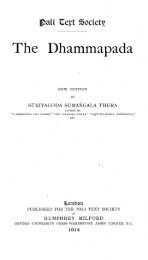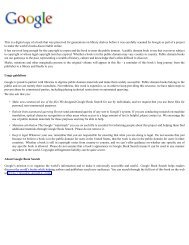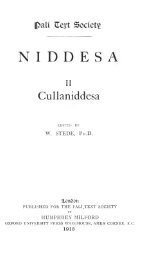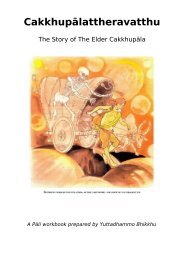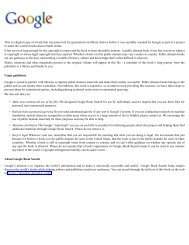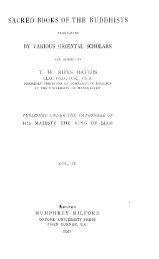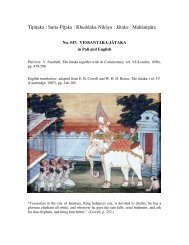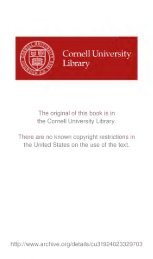Lessons In Practical Buddhism - Sirimangalo.Org
Lessons In Practical Buddhism - Sirimangalo.Org
Lessons In Practical Buddhism - Sirimangalo.Org
You also want an ePaper? Increase the reach of your titles
YUMPU automatically turns print PDFs into web optimized ePapers that Google loves.
need of a refuge before it was too late. Seeing that Bahiya<br />
had lost his excitement during this exchange, the Buddha<br />
taught him the brief training that is found in the Bahiya<br />
Sutta:<br />
‘diṭṭhe diṭṭhamattaṃ bhavissati, sute sutamattaṃ<br />
bhavissati, mute mutamattaṃ bhavissati, viññāte<br />
viññātamattaṃ bhavissatī’ti.<br />
‘in what is seen, there will be only what is seen; in what is<br />
heard, there will be only what is heard, in what is sensed,<br />
there will be only what is sensed, in what is thought, there<br />
will be only what is thought.’<br />
The Buddha explained that to the extent that Bahiya could<br />
train himself in this simple teaching, “tato tvaṃ, bāhiya, na<br />
tena” – “to that extent, Bahiya, there will arise no ‘you’<br />
because of that,” which means that there would be no<br />
misinterpretation of the experience as “me”, “mine”, etc. To<br />
the extent, the Buddha continued, that there arises no self,<br />
“tato tvaṃ, bāhiya, na tattha” – “to that extent, Bahiya,<br />
there will arise no ‘you’ in regards to that object.” To that<br />
extent, the Buddha concluded, “nevidha na huraṃ na<br />
ubhayamantarena. esevanto dukkhassa” – “There will be<br />
neither here nor there or anything in between. This indeed is<br />
the end of suffering.”<br />
This teaching is perhaps the most simple yet infinitely<br />
profound teaching of the Buddha that we have; it is quite<br />
simple to practice but very difficult to understand without<br />
practising it. Without seeing that the objects of reality are<br />
simply mind and body arising and ceasing at every moment,<br />
it is impossible to understand the meaning of this teaching.<br />
Once we can see this basic fact of reality, that there really is<br />
no self or soul or underlying physical or mental substratum<br />
to reality, only then will we understand what is meant by<br />
“neither here nor there nor in between,” since only then will<br />
we give up all mental formations of judgement, partiality,<br />
identification, etc.<br />
116



